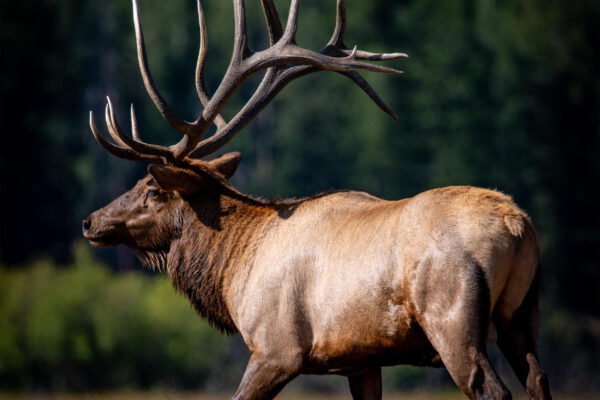A study by researchers at Brigham Young University published in The Journal of Wildlife Management in January showed that Utah elk may be outsmarting hunters. The study comes on the heels of low success rates of hunting elk: In 2015, 12,857 hunters bagged a disappointing 3,833 elk. That’s only a 30% success rate.
It also comes at a time when Central Utah ranchers wonder why the Utah Division of Wildlife Resources can’t do something about all the elk eating all the forage in grazing allotments.
The study watched the roaming patterns of 445 elk with tracking collars between 2015 and 2017, and found that elk reduced their use of public lands by 30% in the middle of rifle season, opting instead to head for private land.
“It’s crazy; on the opening day of the hunt, they move, and on the closing day they move back. It’s almost like they’re thinking, ‘Oh, all these trucks are coming, it’s opening day, better move,'” said BYU professor Brock McMillan, the study’s senior author.
The overpopulation of elk has had a serious impact not only on grazing allotments, but can also hamper farm operations because they can consume the food reserved for livestock.
The study also confirmed that elk populations aren’t as susceptible to drought conditions. Over last year’s drought, elk numbers were steady even as biologists estimated a 10% decline in Utah’s deer population.
When the state began issuing private land permits in 2016, more of the elk stayed on public land. So even with a regulatory change such as issuing private land permits, the elk are quick to adjust.
Elk populations are still problematic for some. But one of the other authors of the study, Maksim Sergeyev, said the study’s data shows that issuing private permits is an effective tool in keeping elk populations in check.
– The Byway
Feature image courtesy NBC news.

